|
REVO Small Grey Wornum
In 1953, noted architect George Grey Wornum created a new layout for Parliament
Square, London. Part of the work included new street lighting and he designed an elegant post-top
tungsten lantern mounted on a custom column (the latter being decorated with various motifs
representing London and Westminster).
These street lights, made by REVO and called the Grey Wornum,
soon became the standard for the City Of Westminster. Two variants, both designs for GLS lamps,
were produced: a large lantern for the "Large Parliament Square" column and a smaller lantern
with a simpler finial for the "Short Parliament Square" column. As far as I know, these
columns and lanterns were unique to London.
Whilst it appears on the surface that the Grey Wornum has surprising longevity on
the streets of London, the original REVO 1950s stock (with tale-tell dome refractor)
have been quietly swapped out and either modernised or replaced by replicas (made by
DW Windsor, Metcraft or Urbis). These can
be spotted by their modern reflector optical systems and photocells masquerading as finials.
There are very few, original REVO Grey Wornums left in London and
the councilís policy is to modernise them all. So I was extremely pleased to obtain this
lantern as it's one of the last original small Grey Wornums left in existence.

Removing some of the paint revealed the original blue-and-white colour scheme underneath the black. I was still
unsure of the exact scheme as the copper spun canopy appeared to be just painted black; however a chance discovery
whilst watching The Professionals revealed a shot with a Grey Wornum just behind
Lewis Collins (The episode is A Hiding To Nothing and several of the
REVO Leicesters surrounding the Royal Albert Hall can also be seen.)

So, the colour scheme will be white, blue and black.
I took advantage of the recent warm spell (July 2008) to work on the lantern. Unfortunately it was painted with
"anti-sticker" black paint which was extremely messy to remove. But whilst removing it, the original black, blue and white
colour scheme appeared underneath and I took this shot as a guide for when it came to repainting.
The hole in the shaft was probably for a photocell.

A day later and the column and lantern was stripped revealing the aluminium frame and copper spun canopy.

I was particularly impressed by how well the enamel over-reflector cleaned up.

Interestingly the lantern's catalogue number was stamped onto both of the lantern support arms. One side was very
corroded whilst the other (pictured below) was less so. Unfortunately the number is still very faint: it looks like
"C 13646 A2" but I could be wrong.

First test of the lantern wired up and mounted. It now needs painting.
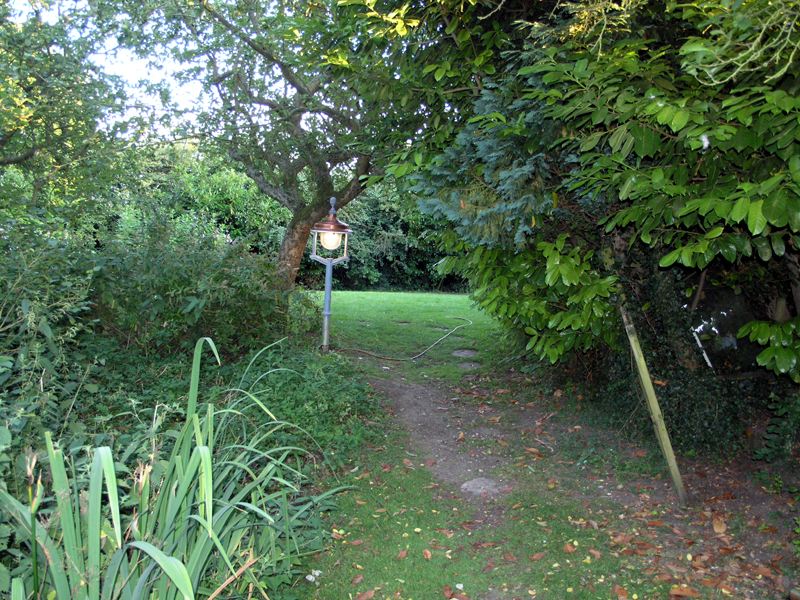
This was the lantern at the end of the summer. It's been completely repainted and now just needs bolting
to the supporting pillar it's standing on
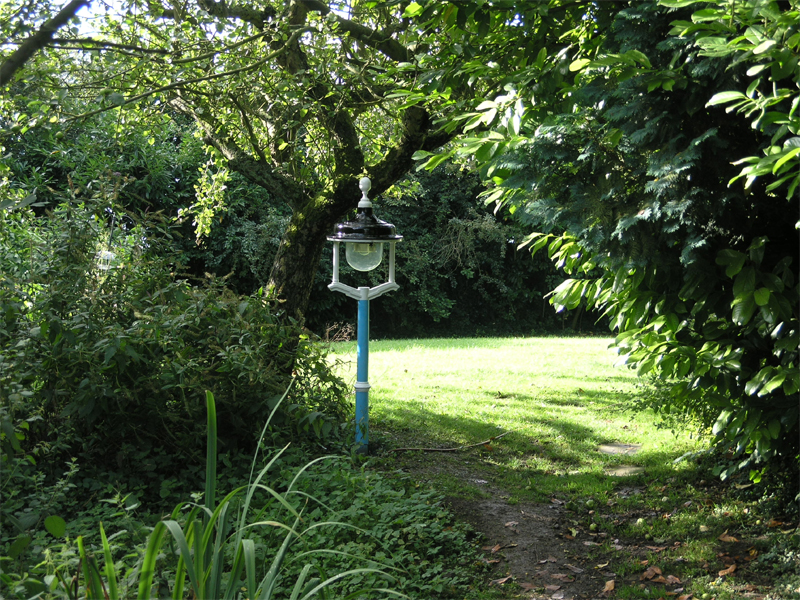
These shots were taken after the first snowfall of February 2009.
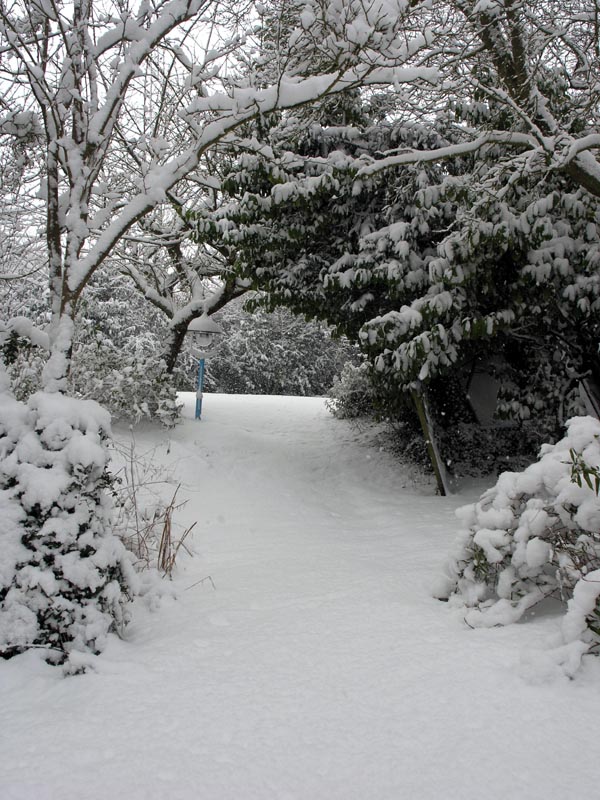
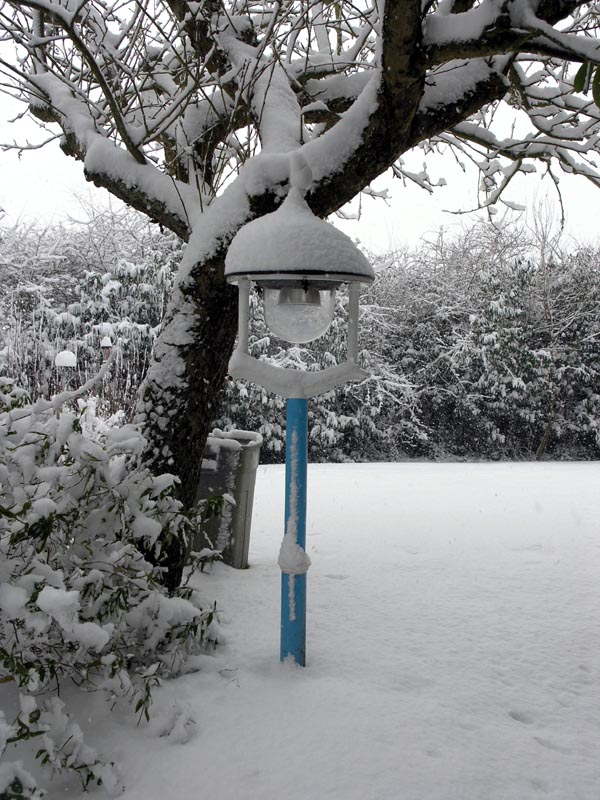
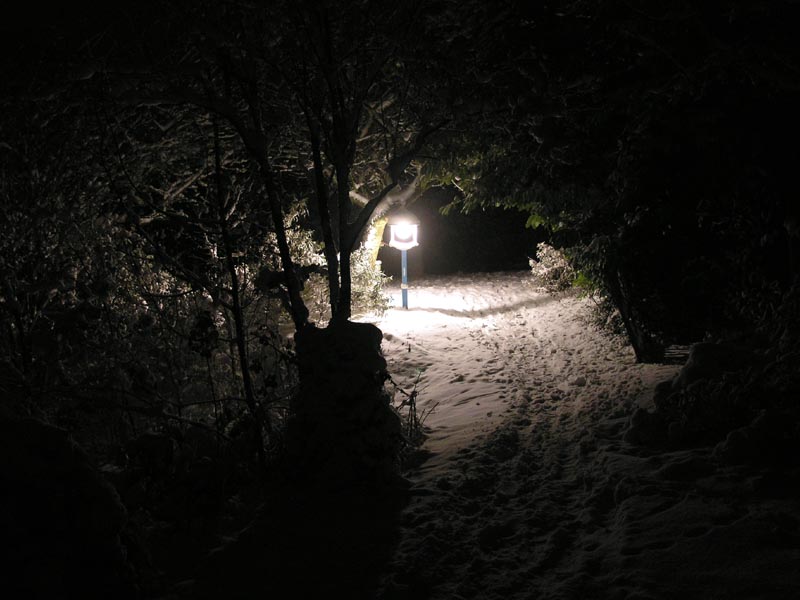
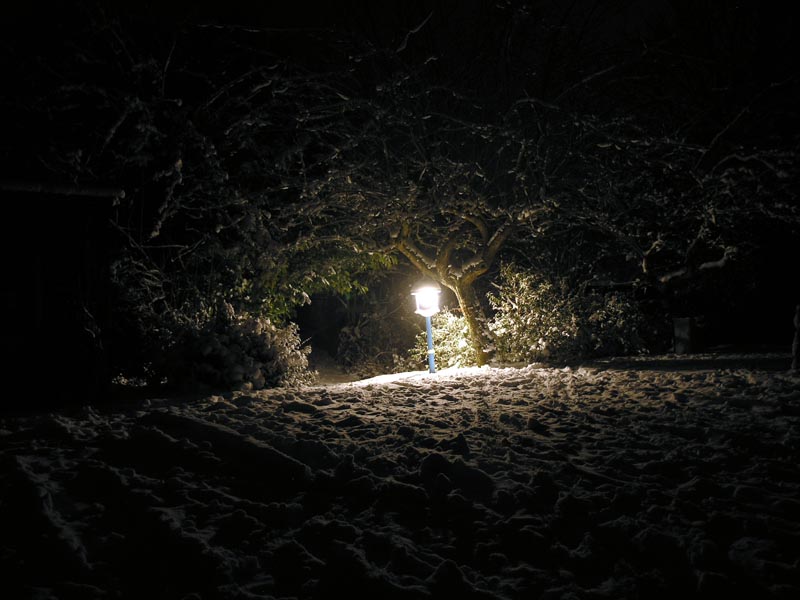
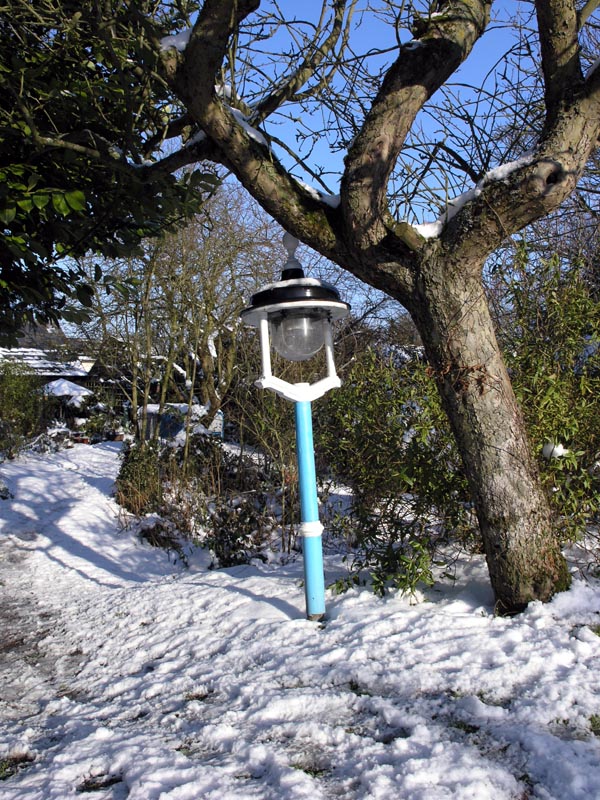
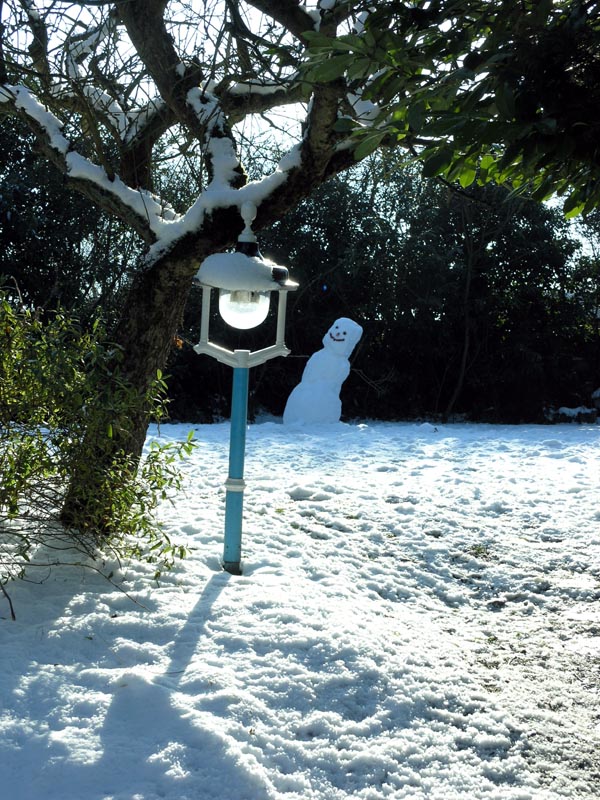
|



